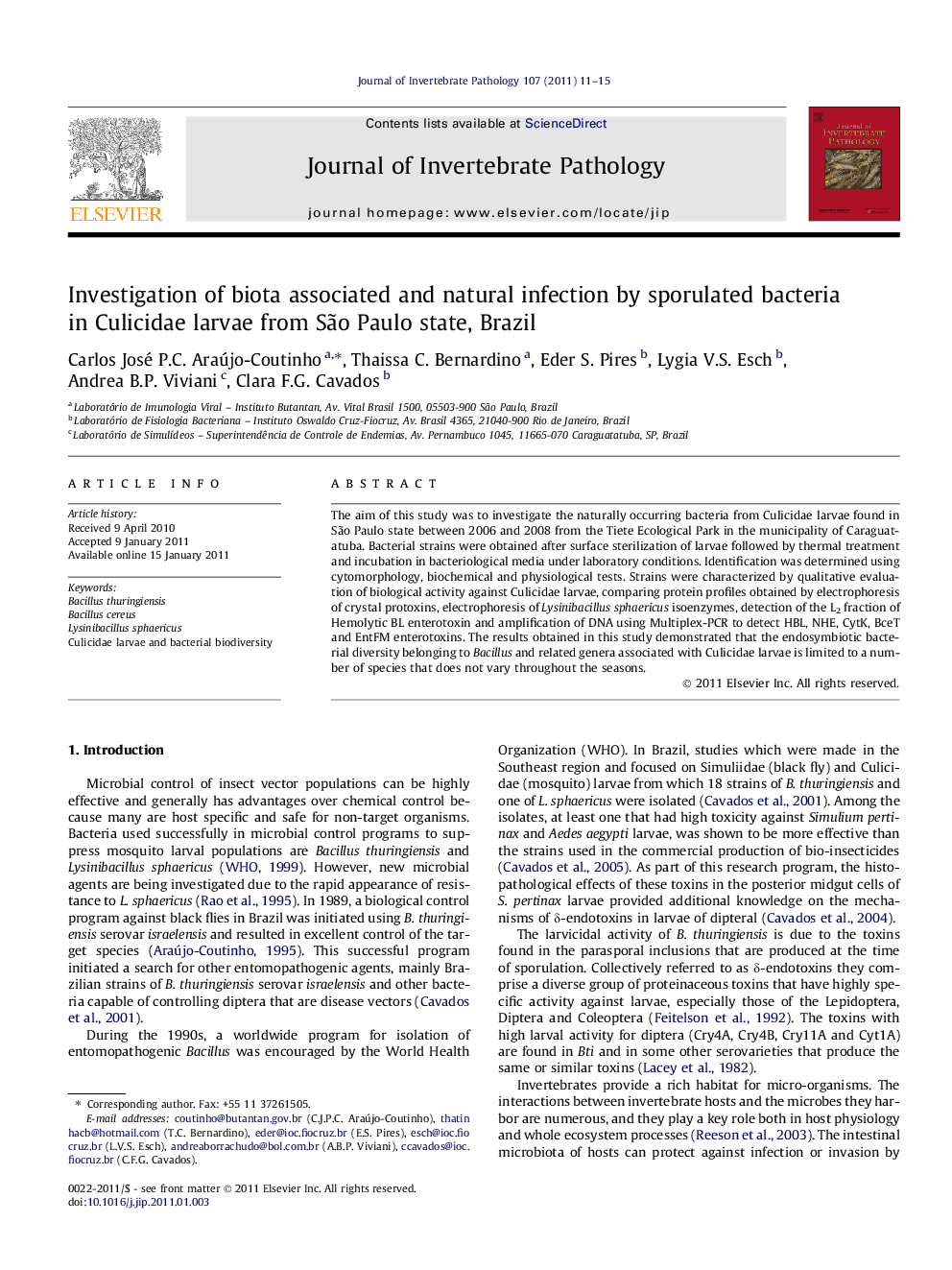| Article ID | Journal | Published Year | Pages | File Type |
|---|---|---|---|---|
| 4557989 | Journal of Invertebrate Pathology | 2011 | 5 Pages |
The aim of this study was to investigate the naturally occurring bacteria from Culicidae larvae found in São Paulo state between 2006 and 2008 from the Tiete Ecological Park in the municipality of Caraguatatuba. Bacterial strains were obtained after surface sterilization of larvae followed by thermal treatment and incubation in bacteriological media under laboratory conditions. Identification was determined using cytomorphology, biochemical and physiological tests. Strains were characterized by qualitative evaluation of biological activity against Culicidae larvae, comparing protein profiles obtained by electrophoresis of crystal protoxins, electrophoresis of Lysinibacillus sphaericus isoenzymes, detection of the L2 fraction of Hemolytic BL enterotoxin and amplification of DNA using Multiplex-PCR to detect HBL, NHE, CytK, BceT and EntFM enterotoxins. The results obtained in this study demonstrated that the endosymbiotic bacterial diversity belonging to Bacillus and related genera associated with Culicidae larvae is limited to a number of species that does not vary throughout the seasons.
Graphical abstract11,992 of Culex spp. and Aedes spp. larvae were collected, of which 10,321 larvae did not exhibit any apparent symptoms and 1671 exhibited some type of symptom that could not be attributed to a particular pathogen.Figure optionsDownload full-size imageDownload as PowerPoint slideResearch highlights► The aim was to investigate naturally occurring bacteria from Culicidae larvae. ► Identification was determined by cytomorphology, biochemical and physiological tests. ► One hundred and sixteen strains of bacteria were isolated and identified. ► Bacteria belonging to the genus Bacillus, Lysinibacillus and Brevibacillus.
